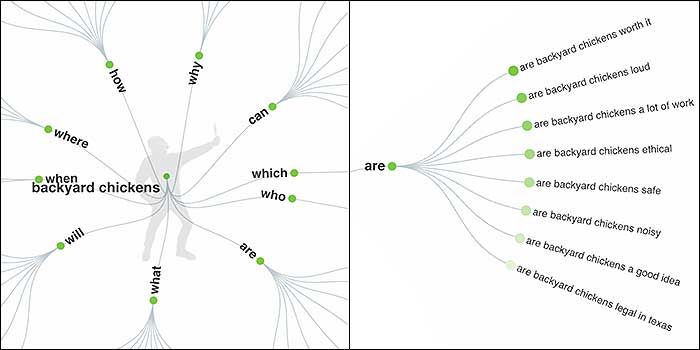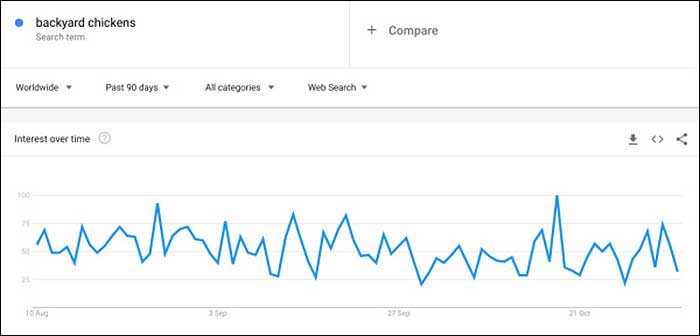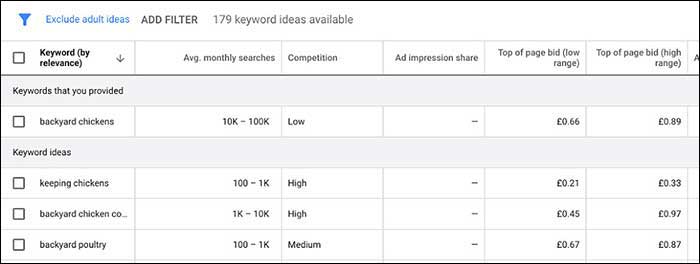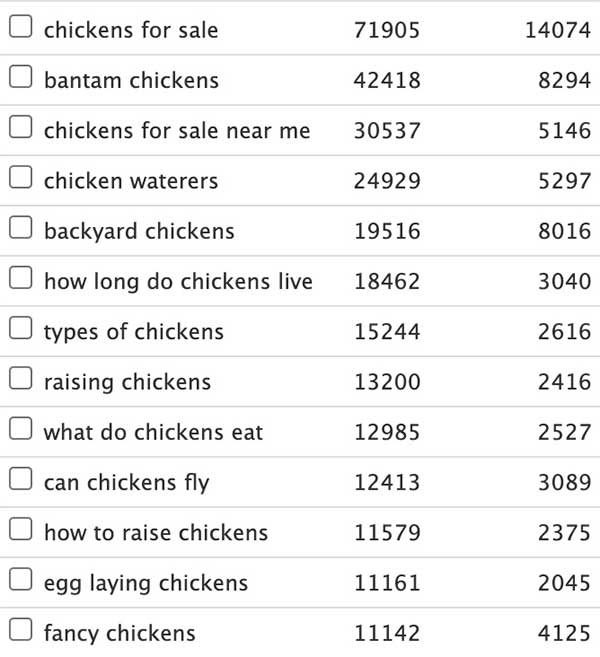
So you want to know how to choose a niche for your new online business. After all, some extra income would be welcome right now. And you need something to keep your mind occupied. Being able to work from wherever you like, whenever you like, sounds pretty attractive, too.
But where to start when it comes to how to choose a niche? Is it best to get one of those pretty websites you’ve seen on TV ads? Or maybe you need to decide what to call it first?
Or perhaps you already have an idea of where you want to go. Those exotic jellyfish you’ve been keeping in your garden pond are bound to be something people will love hearing about.
The answer is: none of the above.
Why not? Because you first need to know how to choose a niche that will succeed.
Without a clear idea about that, you’ll struggle to move forward at all.
What’s a Niche?
In our context, a niche is simply whatever you’re going to write about in your website or blog.

In a more general sense, a niche market is a small part of a larger market that has its own specific needs, which are different from the larger market in some way.
A niche is…
- an area of expertise — something about which you either know a lot, or are prepared to learn
- something you’d be proud to share your knowledge of to help other people
- a subject you’d love to write about, day in, day out, perhaps for many years
- a topic other people want to know more about.
But how do you know how to choose a niche? It’s a question that exasperates many people who start off thinking it will be easy. They later realize, after months of work, that not many other people share their interest in things like the love life of exotic jellyfish.
So, before you do anything else, you need to work out the answers to these questions…
- Which subject or subjects are you particularly passionate about?
- How many other people share that passion?
- How much competition is out there?
- Is the passion likely to make you any money?
It’s an issue many would-be bloggers (or “online business owners”) really struggle with.
It’s also something we at Solo Build It! help our customers with, every day. It’s why our customers have so many, varied, niches. (You can get some idea of just how varied they are, here.)
And now, I’m going to let you in on those secrets. Together, we’re going to find your best niche business idea in three simple steps.
Step 1: How To Choose A Niche That’s Perfect For You
This is the fun bit of the equation: how to choose a niche that you love. Some people call it a subject you’re passionate about.
Using the word “passionate” can feel a bit overwhelming for some. So let me ask you this simpler question:
What topic makes you smile?
I don’t mean the thought of the money you’re going to make. Money is the last step, not the first.
I mean, when you think about a subject you have in mind for your fledgling business, what gives you a warm and fuzzy feeling inside?
When you wake in the morning, instead of feeling heavy about the day ahead, what would give you real pleasure to know you’re going to work on? Because, let me be honest here, it is work. It doesn’t often feel like it, but it is. After all…

Look around you. What books do you have? Which magazines do you subscribe to? What genre of movies or music do you enjoy? Which places have you visited and what was it about them that you loved? What do you do in your free time? What makes you laugh? What makes you feel good about yourself?
All those things can give you clues as to how to choose a niche that is right for you.
Nothing springing to mind? Try this.
Think back to your childhood. (It doesn’t matter how long ago it was!) What do you remember doing that made you smile? What gave you real pleasure? What goals did you have then that you gave up on?
 As children, we are free to indulge our excitement. If we enjoy rollerskating, we do it. If we revel in reading, we read.
As children, we are free to indulge our excitement. If we enjoy rollerskating, we do it. If we revel in reading, we read.
With the increased responsibilities of growing into adulthood, life takes over and dreams are put on hold.
My dream was to be a veterinary surgeon. I lived and breathed animals, especially dogs. But I didn’t make the grade in the sciences — my ability (or rather inability) to do numbers let me down. So that dream was put on hold.
Until eight years ago, when I was at the stage you’re at now, wondering how to find my niche. I let my mind wander, and animals popped into my head — dogs in particular. But I didn’t have enough knowledge or experience to compete. There are a lot of dog-blogs out there.
Leaving my brain to work it out (have you ever tried asking your brain a question just before you sleep, and waiting for the answer? Try it — it works for me!), I finally arrived at my answer…
Chickens. And so, unlikely though it seemed, a niche was born.

OK, it’s a long way from me becoming a vet. Except — next year, to further my knowledge, I’m taking a degree course run by the University of Edinburgh Veterinary School. Funny how things work out.
So no, I won’t be a fully-fledged vet. But I’m sharing my knowledge about chickens with people from all over the world, and perhaps more importantly — I’m loving it. Even after eight years, I get out of bed every morning and smile at the thought of doing it all again.
Although I don’t work on my site daily. One of the advantages of choosing a profitable niche is that you earn enough not to have to work on it every day if you choose not to.
But that’s another story.
Top Tips for Step 1
- Take some quiet time by yourself. Put on some relaxing music. Have your favorite beverage in your hand and a notepad by your side.
- Let your mind drift. Forget today’s worries. Go wherever your mind takes you.
- Focus on topics that make you smile. It doesn’t matter whether it’s something you loved as a child, or a passion you’ve discovered in adulthood.
- Think there’s nothing you could write about? Think again. There’s always something. If you can’t see it right now, take some time away. Relax and allow your brain to work its magic.
What if there’s more than one subject you’d like to write about?
Explore them all. Don’t dismiss anything just yet, no matter how crazy it may seem (after all — chickens??). Eventually, you’ll need to focus on one, to develop an expertise and to be able to identify who you’re writing for.
Don’t worry. There are two other steps before you get to decide for certain which path to follow.
Step 2: How to Choose a Niche Others Are Looking For
Now comes a bit of hard reality: does anyone else care?
Those jellyfish might excite you, but I have some news you might not want to hear: people are generally not interested in what you have to say except in terms of what it means for them.
The “old-style” blogging — writing about your day, your kids’ day, how your jellyfish gleamed in the sun — doesn’t attract anyone, unless you’re some kind of celebrity type. And let’s be honest, most of us aren’t.
 What the public wants to know is how what you have to say can help them. They have problems; they want to know how you can help them find solutions. They have wants or needs; they want to know how you’re going to help them fulfill their aspirations.
What the public wants to know is how what you have to say can help them. They have problems; they want to know how you can help them find solutions. They have wants or needs; they want to know how you’re going to help them fulfill their aspirations.
So you need to be sure that people other than you are interested in this topic. And you need to know whether a lot of other people are already writing about it — how much competition there is.
This step is not as straightforward as finding your passion. But there are ways of discovering answers to those questions. Here are three of them.
- Answer the Public: this is a free, fun site that lists questions the public have asked about any topic in the last 90 days. They’re all taken from Google searches, so you can be pretty sure they’re for real.
Put your topic into the search box and see what comes out.

It won’t give you numbers, but it will give you a broad idea of whether anyone is asking questions — and whether they’re questions you could, or would want to, answer.
- Google Trends: another free tool, it tells you two things:
- Is anyone actively searching for this topic?
- Is interest in it increasing or decreasing?

Google Trends provides a helpful overview, but it does what it says on the tin — it indicates trends, not specific numbers. And bear in mind that some niches are seasonal. So what you see trending now may be completely different in six month’s time.
- Google’s Keyword Planner: free and simple to use, this tool allows you to search locally and globally for broad numbers of people searching for that topic per month.
Enter your topic (or “keyword”) and take a look at what it tells you.

You’ll see average searches per month, and competition measured in imprecise categories: low, medium and high.
So you still don’t really know whether people are searching in droves, or dribs and drabs. And exactly how high (or low) is the competition?
To be sure of choosing a perfect niche, one that stands a good chance of being successful, you need a more specific number.
Which is where Brainstorm It! comes into its own.
What Is Brainstorm It!?
It’s a tool provided as part of the Solo Build It! Package. It provides you with all the numbers you could possibly need to decide whether a niche has enough “demand” (that is, people searching for it) and how much “supply” (competition) you’ll have to contend with.
(And an “Action Guide” to take you through the decision-making steps.)
How does it work?
Much like the other keyword research tools we’ve looked at. Put your niche topic into its “site concept finder” search and wait. A few minutes later, hundreds of possible keywords display, along with numbers.
The difference is, the numbers it gives are specific enough that you can make an informed decision about whether this niche is likely to be successful.
Not just the niche. What about the questions people may be asking? Can Brainstorm It! give clues about that?
Of course. (And this is just a tiny selection.)

There’s a lot more to it than that, and it can take time to learn how to read the figures. But (in my view) it’s the most advanced tool around. Along with the Action Guide, it’s why Solo Build It! is considered one of the best blogging platforms to make money.
It’s why I had over 5,000 visitors a day to my website in October 2020…

…and autumn and winter are my quiet seasons. In spring and summer this rises to around 16,000 visitors per day.
(No, that’s not a typo. 16,000 per day.)
Top Tips for Step 2
- Do some research on numbers using Answer the Public, Google Trends, and Keyword Planner. Research is another of the most critical parts of choosing a niche.
- Combine that knowledge with the results of your “what makes me smile” analysis from Step 1.
Step 3: Find a Profitable Niche
Unless you want to build a “hobby” site with no financial benefit, you’ll need to assess whether your chosen niche will have the ability to make you some money.
Bear in mind, it won’t happen overnight. Your site visitors will need to get to know you before they trust you enough to buy something from you. After all, would you buy from someone you don’t know?
It will happen though, if you’ve carefully assessed what niche you should pick.
So how do you work out whether this niche has the potential to make money? Yep, more research!
(Can you see now why it’s so important not to jump into launching your website immediately, before you’ve done all the background work?)
It also comes back to you. Ask yourself what you would be comfortable using to make money.
- Putting ads on your site? Works for any niche, but can look messy and doesn’t make much money until you’re attracting a lot of site visitors.
- Affiliate marketing? Can work very well, but commissions can be small. To be really successful, you’ll need to write detailed product reviews.
- Ebooks or other information products? A very popular way to create your own product on a subject close to your site visitor’s heart.
- Online courses? An excellent way to share information and engage your site visitor.
How do you know which is best for the visitor and will earn you money at the same time?
 Take a look on websites and social media platforms (Facebook, Pinterest, Twitter, YouTube for example) in your chosen niche. What issues are people talking about? What do they want as solutions? Are they finding those solutions? What are they, and could you provide better?
Take a look on websites and social media platforms (Facebook, Pinterest, Twitter, YouTube for example) in your chosen niche. What issues are people talking about? What do they want as solutions? Are they finding those solutions? What are they, and could you provide better?
Go over to websites like ClickBank, Etsy and Amazon. What are people buying? Are there products on those platforms you could envisage being helpful to your audience?
And finally, look at anyone you might think of as your competition. What are they selling? Which of their products seems to be most popular?
Is anything you’ve found a solution you might be able to provide?
Top Tips for Step 3
- Think about the products or services you will be able to provide that address your site visitor’s problems. How will you find a solution that works for her and makes a profit for you?
- What products would you feel comfortable suggesting?
- Whatever else you do, do not start trying to find a niche by looking at how much money you can make. That’s upside-down thinking. Do your homework first. Be prepared to offer outstanding content before you start even thinking of making money.
- Your profit margins are important, but they’re not the starting point.

How to Choose a Niche: Tying It All Together
Focusing in on one niche topic means you can more easily identify your ideal site visitor — the person you’d enjoy working with.
It gives you a focus, too. You’ll build expertise, knowledge, authority in your niche. You’ll know what your site visitor needs, and you’ll be able to meet those needs.
And with that comes a relationship, and your site visitors getting to know, like and trust you. That’s the critical step before selling.
In Solo Build It! we call it PREselling. Adding such value to your prospective customer’s life that she can’t help but want to buy from you.
Does it all feel a little overwhelming? It can be, unless you have a compass to find your way out of that jellyfish pond.
Let Solo Build It! be that compass for you.




Cath Andrews
Latest posts by Cath Andrews (see all)
- Start a Passion-Based Business and Live Your Dream - February 1, 2023
- What Do You Say When Their Eyes Glaze Over? - December 20, 2021
- How to Monetize Your Email List in 5 Simple Steps - October 26, 2021

